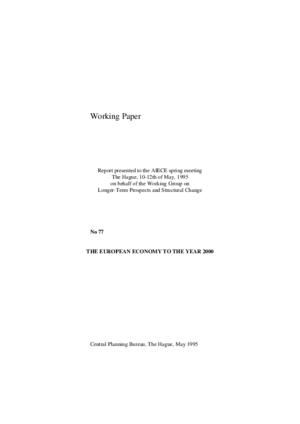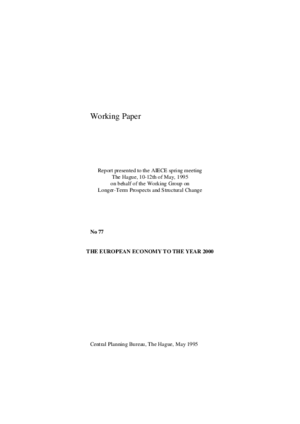The European economy to the year 2000; report presented to the AIECE spring meeting; The Hague, 10-12th of May, 1995 on behalf of the Working Group on LOnger-Term Prospects and structural change
The present medium-term report is the fifteenth in the series. This time we can present the recent medium-term forecasts of AIECE member institutes for 13 European countries, 9 Western European and 4 Central European countries.
For several countries two or more forecasts are available. In some countries, France and the Netherlands, the national institutes have not made a medium-term projection recently. Aggregation of the national forecasts may give an idea of what we can expect for Europe as a whole. Also the international bodies regularly prepare medium-term forecasts, often of a scenario type. The report contains the recent views of the European Commission, the IMF and the OECD.
The outline of the report is as follows. First, in chapter II we will briefly describe the present situation of the world economy and the short-term prospects, in order to put the medium-term in a proper setting. In chapter III we give an overview of the forecasts of the member-institutes and those of the international bodies, and indicate to what extent the aggregated national views are in line with the scenarios for Western Europe as a whole. Chapter IV stresses the importance of growth cycles in medium-term analyses. In chapter V we report on recent analysis by the Central Planning Bureau on the growth cycle mechanism, carried out with a preliminary version of the CPB World Model. Chapter VI summarises the main findings of the report.
Annex 1 surveys the main assumptions used by the institutes. Annex 2 contains the detailed projections of the different member-institutes grouped by source and by variable. Annex 3 gives some detail on the scenarios of EU, IMF and OECD, while annex 4 scetches some characteris-tics of AIECE and CPB.

